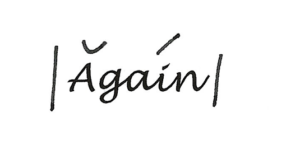
Have you heard of iambic pentameter? Students often tell me they know it’s important but they are not quite sure what it is. In this post, I aim to clear up any confusion. The good news is that it’s not as complicated as you might think.
When we are speaking English, we use stress all the time. Every word has one syllable that is more heavily stressed than the others, and we also give some words in a sentence more stress than others. We do this without thinking. Variations in stress help with meaning and give our language its own special rhythm.
English verse, or poetry, is based on stress. It’s what gives some poems, and verse in some plays, their noticeable rhythm. We call this basic structure meter. (Unusually for me, I am adopting the US spelling. This is because pentameter and tetrameter, for example, are spelt -er and I do like some consistency!)
While meter is the pattern, the basic unit of measurement within a meter is the foot. This is nothing to do with feet and inches! A foot consists of two or more (can be one but very rarely) syllables, one of which is more stressed than the other(s).
The most common foot in English verse is the iamb. This is, as I like to call it, ‘de-dum.’ Where the ‘de’ is untressed and the ‘dum’ is stressed. As an example, let’s imagine the word ‘again.’ When we say this word, we give more stress to the second syllable. We can explain this using symbols:

Here, the word again is one foot, since the first syllable is unstressed and the second syllable is stressed. This word, therefore, is an iamb.
Ok, so once we know what an iamb is, we need to know about pentameter. This is actually really simple. The prefix penta– means five, so pentameter just means five feet. If the foot we are using is an iamb, then an iambic pentameter is five iambs. Here is a line of iambic pentameter from Shakespeare’s Macbeth:

This is Lady Macbeth telling her husband that as long as he is brave they won’t fail in their plan. Notice that some of the feet contain parts of words. I have cut ‘courage’ and ‘sticking’ in two to show where the feet begin and end. If you say this line out loud, you will notice that you naturally place the stress where the ‘/’ symbol is over each foot.
Shakespeare wrote most of his verse in iambic pentameter. This doesn’t mean, however, that he stuck rigidly to this exact pattern. That would sound very forced. You will find that the first iamb is often reversed so that the stress is on the first syllable of that foot, for example. This turns the iamb into a trochee. He also uses other meters; the Witches in Macbeth, for instance, speak mainly in trochaic tetrameter.
There is lots more to discuss about Shakespeare’s use of meter, and meter in general, but I don’t want to make this post too complex. If you would like to hear some examples of iambic pentameter spoken aloud, I will shortly be making a Facebook Live video about this very subject. Come and find me on Facebook (@harrietenglishtutor) and you will find the recording under the ‘Live’ tab.
Please let me know if you found this explanation helpful, and if you would like something similar for other meters.